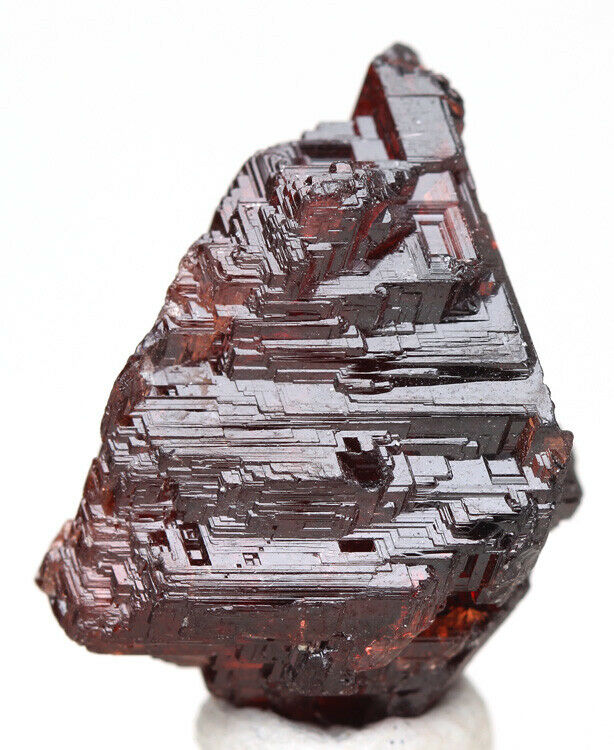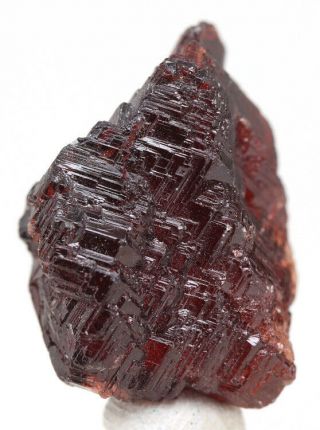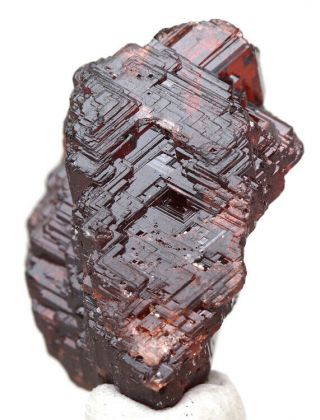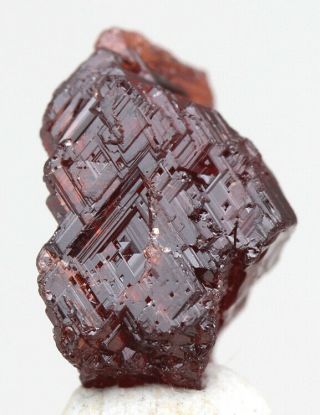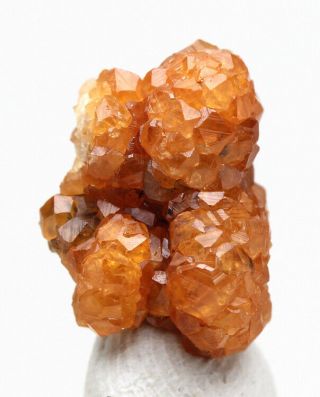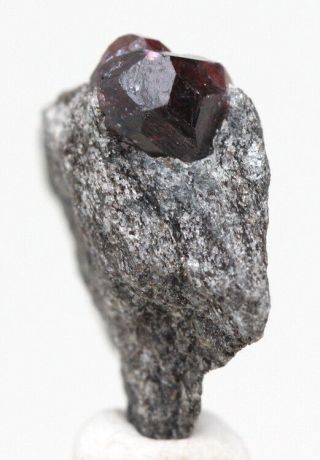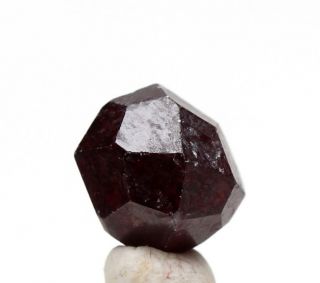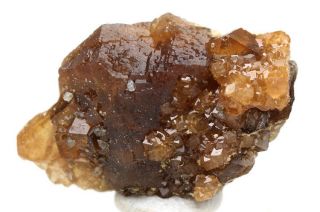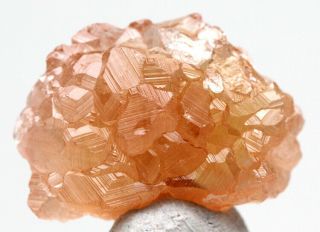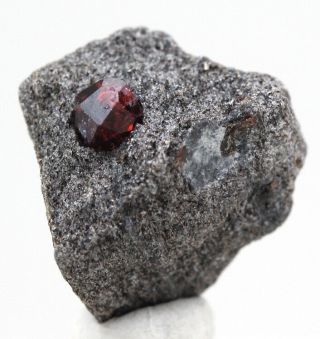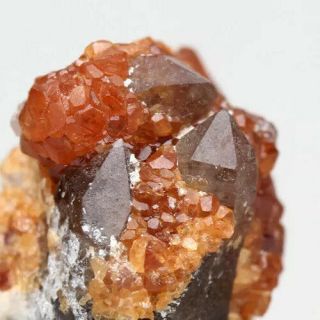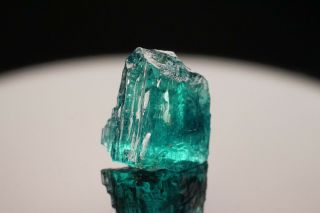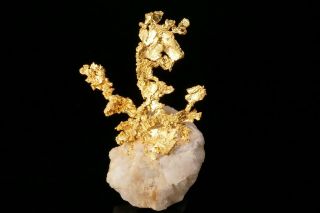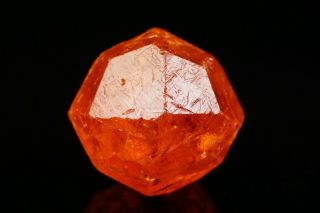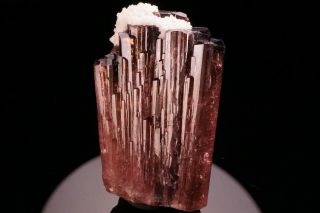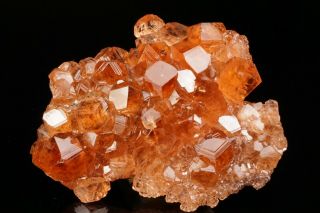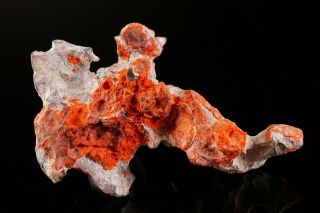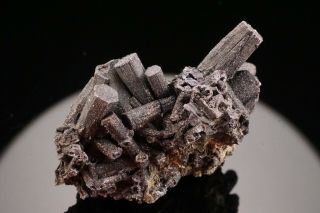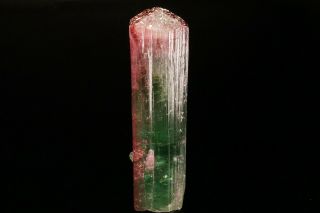SPESSARTITE Gemmy Garnet Crystal Cluster Mineral Specimen NAVEGADOR MINE BRAZIL
Item History & Price
| Reference Number: Avaluer:16061777 | Modified Item: No |
| Weight: 11.73 grams | Size: 26 mm x 18 mm x 15 mm |
| Mineral: Garnet |
I offer a shipping discount for customers who combine their payments for multiple purchases into one payment!
The discount is regular shipping price for the first item and just 50 cents for each additional item!
To be sure you get your shipping discount just make sure all the items you want to purchase are in your cart.
Auctions you win are added to your cart automatically.
For any "buy it now" item...s or second chance offers, be sure to click the "add to cart" button, NOT the "buy it now" button.
Onceall of your items are in your cart just pay for them from your cart andthe combined shipping discount should be applied automatically.
I offer a money back guarantee on every item I sell.
If you are not 100% happy with your purchase just send me a message to let me know
and I will buy back the item for your full purchase price.
Hi there. I am selling this really AMAZING spessartite garnet crystal cluster fine mineral specimen. This is really an INCREDIBLY HIGH QUALITY piece!!! This piece is lustrous and perfect really. It is from Navegador Mine, Brazil. If you have any questions, do not hesitate to ask me. Thanks so much for visiting my listing and have a great day!
The following is a wikipedia entry about garnets:
GarnetFrom Wikipedia, the free encyclopediaFor other uses, see Garnet (disambiguation).Garnet260pxGeneralCategory NesosilicateFormula(repeating unit) The general formula X3Y2(SiO4)3Crystal system IsometricIdentificationColor virtually all colors, blue very rareCrystal habit Rhombic dodecahedron or cubicCleavage IndistinctFracture conchoidal to unevenMohs scale hardness 6.5–7.5Luster vitreous to resinousStreak WhiteSpecific gravity 3.1–4.3Polish luster vitreous to subadamantine[1]Optical properties Single refractive, often anomalous double refractive[1]Refractive index 1.72–1.94Birefringence NonePleochroism NoneUltraviolet fluorescence variableOther characteristics variable magnetic attractionMajor varietiesPyrope Mg3Al2Si3O12Almandine Fe3Al2Si3O12Spessartine Mn3Al2Si3O12Andradite Ca3Fe2Si3O12Grossular Ca3Al2Si3O12Uvarovite Ca3Cr2Si3O12Garnets ( /ˈɡɑːrnɪt/) are a group of silicate minerals that have been used since the Bronze Age as gemstones and abrasives.
All species of garnets possess similar physical properties and crystal forms, but differ in chemical composition. The different species are pyrope, almandine, spessartine, grossular (varieties of which are hessonite or cinnamon-stone and tsavorite), uvarovite and andradite. The garnets make up two solid solution series: pyrope-almandine-spessartine and uvarovite-grossular-andradite.
Contents [hide] 1 Etymology2 Physical properties2.1 Properties2.2 Crystal structure2.3 Hardness2.4 Magnetics used in garnet series identification3 Garnet group endmember species3.1 Pyralspite garnets – aluminium in Y site3.1.1 Almandine3.1.2 Pyrope3.1.3 Spessartine3.1.4 Pyrope–spessartine (blue garnet or color-change garnet)3.2 Ugrandite group – calcium in X site3.2.1 Andradite3.2.2 Grossular3.2.3 Uvarovite3.3 Less common species3.3.1 Knorringite4 Garnet structural group5 Synthetic garnets6 Geological importance of garnet7 Uses of garnets7.1 Gemstones7.2 Industrial uses8 See also9 Notes10 References11 Further reading12 External linksEtymologyThe word garnet comes from the 14th‑century Middle English word gernet, meaning 'dark red'. It is derived from the Latin granatus, from granum ('grain, seed'). This is possibly a reference to mela granatum or even pomum granatum ('pomegranate', [2] Punica granatum), a plant whose fruits contain abundant and vivid red seed covers (arils), which are similar in shape, size, and color to some garnet crystals.[3]
Physical propertiesPropertiesGarnet species are found in many colors including red, orange, yellow, green, purple, brown, blue, black, pink, and colorless, with reddish shades most common.
A sample showing the deep red color garnet can exhibit.Garnet species' light transmission properties can range from the gemstone-quality transparent specimens to the opaque varieties used for industrial purposes as abrasives. The mineral's luster is categorized as vitreous (glass-like) or resinous (amber-like).
Crystal structure
Crystal structure model of garnetGarnets are nesosilicates having the general formula X3Y2(Si O4)3. The X site is usually occupied by divalent cations (Ca, Mg, Fe, Mn)2+ and the Y site by trivalent cations (Al, Fe, Cr)3+ in an octahedral/tetrahedral framework with [SiO4]4− occupying the tetrahedra.[4] Garnets are most often found in the dodecahedral crystal habit, but are also commonly found in the trapezohedron habit. (Note: the word "trapezohedron" as used here and in most mineral texts refers to the shape called a Deltoidal icositetrahedron in solid geometry.) They crystallize in the cubic system, having three axes that are all of equal length and perpendicular to each other. Garnets do not show cleavage, so when they fracture under stress, sharp irregular pieces are formed (conchoidal).
HardnessBecause the chemical composition of garnet varies, the atomic bonds in some species are stronger than in others. As a result, this mineral group shows a range of hardness on the Mohs scale of about 6.5 to 7.5. The harder species like almandine are often used for abrasive purposes.
Magnetics used in garnet series identificationFor gem identification purposes, a pick-up response to a strong neodymium magnet separates garnet from all other natural transparent gemstones commonly used in the jewelry trade. Magnetic susceptibility measurements in conjunction with refractive index can be used to distinguish garnet species and varieties, and determine the composition of garnets in terms of percentages of end-member species within an individual gem.[5]
Garnet group endmember speciesPyralspite garnets – aluminium in Y siteAlmandine: Fe3Al2(SiO4)3Pyrope: Mg3Al2(SiO4)3Spessartine: Mn3Al2(SiO4)3Almandine
Almandine in metamorphic rockAlmandine, sometimes incorrectly called almandite, is the modern gem known as carbuncle (though originally almost any red gemstone was known by this name). The term "carbuncle" is derived from the Latin meaning "live coal" or burning charcoal. The name Almandine is a corruption of Alabanda, a region in Asia Minor where these stones were cut in ancient times. Chemically, almandine is an iron-aluminium garnet with the formula Fe3Al2(SiO4)3; the deep red transparent stones are often called precious garnet and are used as gemstones (being the most common of the gem garnets). Almandine occurs in metamorphic rocks like mica schists, associated with minerals such as staurolite, kyanite, andalusite, and others. Almandine has nicknames of Oriental garnet, almandine ruby, and carbuncle.
PyropePyrope (from the Greek pyrōpós meaning "fire-eyed") is red in color and chemically an aluminium silicate with the formula Mg3Al2(SiO4)3, though the magnesium can be replaced in part by calcium and ferrous iron. The color of pyrope varies from deep red to black. Pyrope and spessartine gemstones have been recovered from the Sloan diamondiferous kimberlites in Colorado, from the Bishop Conglomerate and in a Tertiary age lamprophyre at Cedar Mountain in Wyoming.[6]
A variety of pyrope from Macon County, North Carolina is a violet-red shade and has been called rhodolite, Greek for "rose". In chemical composition it may be considered as essentially an isomorphous mixture of pyrope and almandine, in the proportion of two parts pyrope to one part almandine. Pyrope has tradenames some of which are misnomers; Cape ruby, Arizona ruby, California ruby, Rocky Mountain ruby, and Bohemian garnet from the Czech Republic. Another intriguing find is the blue color-changing garnets from Madagascar, a pyrope-spessartine mix. The color of these blue garnets is not like sapphire blue in subdued daylight but more reminiscent of the grayish blues and greenish blues sometimes seen in spinel. However, in white LED light, the color is equal to the best cornflower blue sapphire, or D block tanzanite; this is due to the blue garnet's ability to absorb the yellow component of the emitted light.[citation needed]
Pyrope is an indicator mineral for high-pressure rocks. The garnets from mantle-derived rocks, peridotites, and eclogites commonly contain a pyrope variety.
Spessartine
Spessartine (the reddish mineral)Spessartine or spessartite is manganese aluminium garnet, Mn3Al2(SiO4)3. Its name is derived from Spessart in Bavaria. It occurs most often in granite pegmatite and allied rock types and in certain low grade metamorphic phyllites. Spessartine of an orange-yellow is found in Madagascar. Violet-red spessartines are found in rhyolites in Colorado and Maine.
Pyrope–spessartine (blue garnet or color-change garnet)Blue pyrope–spessartine garnets were discovered in the late 1990s in Bekily, Madagascar. This type has also been found in parts of the United States, Russia, Kenya, Tanzania, and Turkey. It changes color from blue-green to purple depending on the color temperature of viewing light, as a result of the relatively high amounts of vanadium (about 1 wt.% V2O3).[7]
Other varieties of color-changing garnets exist. In daylight, their color ranges from shades of green, beige, brown, gray, and blue, but in incandescent light, they appear a reddish or purplish/pink color.
This is the rarest type of garnet. Because of its color-changing quality, this kind of garnet resembles Alexandrite.
Ugrandite group – calcium in X siteAndradite: Ca3Fe2(SiO4)3Grossular: Ca3Al2(SiO4)3Uvarovite: Ca3Cr2(SiO4)3AndraditeAndradite is a calcium-iron garnet, Ca3Fe2(SiO4)3, is of variable composition and may be red, yellow, brown, green or black. The recognized varieties are topazolite (yellow or green), demantoid (green) and melanite (black). Andradite is found both in deep-seated igneous rocks like syenite as well as serpentines, schists, and crystalline limestone. Demantoid has been called the "emerald of the Urals" from its occurrence there, and is one of the most prized of garnet varieties. Topazolite is a golden-yellow variety and melanite is a black variety.
Grossular
Grossular on display at the U.S. National Museum of Natural History. The green gem at right is a type of grossular known as tsavorite.Grossular is a calcium-aluminium garnet with the formula Ca3Al2(SiO4)3, though the calcium may in part be replaced by ferrous iron and the aluminium by ferric iron. The name grossular is derived from the botanical name for the gooseberry, grossularia, in reference to the green garnet of this composition that is found in Siberia. Other shades include cinnamon brown (cinnamon stone variety), red, and yellow. Because of its inferior hardness to zircon, which the yellow crystals resemble, they have also been called hessonite from the Greek meaning inferior. Grossular is found in contact metamorphosed limestones with vesuvianite, diopside, wollastonite and wernerite.
Grossular garnet from Kenya and Tanzania has been called tsavorite. Tsavorite was first described in the 1960s in the Tsavo area of Kenya, from which the gem takes its name.[8]
UvaroviteUvarovite is a calcium chromium garnet with the formula Ca3Cr2(SiO4)3. This is a rather rare garnet, bright green in color, usually found as small crystals associated with chromite in peridotite, serpentinite, and kimberlites. It is found in crystalline marbles and schists in the Ural mountains of Russia and Outokumpu, Finland.
Less common speciesCalcium in X siteGoldmanite: Ca3V2(SiO4)3Kimzeyite: Ca3(Zr, Ti)2[(Si, Al, Fe3+)O4]3Morimotoite: Ca3Ti4+Fe2+(SiO4)3Schorlomite: Ca3(Ti4+, Fe3+)2[(Si, Ti)O4]3Hydroxide bearing – calcium in X siteHydrogrossular: Ca3Al2(SiO4)3−x(OH)4xHibschite: Ca3Al2(SiO4)3−x(OH)4x (where x is between 0.2 and 1.5)Katoite: Ca3Al2(SiO4)3−x(OH)4x (where x is greater than 1.5)Magnesium or manganese in X siteKnorringite: Mg3Cr2(SiO4)3Majorite: Mg3(Fe2+Si)(SiO4)3Calderite: Mn3Fe3+2(SiO4)3KnorringiteKnorringite is a magnesium-chromium garnet species with the formula Mg3Cr2(SiO4)3. Pure endmember knorringite never occurs in nature. Pyrope rich in the knorringite component is only formed under high pressure and is often found in kimberlites. It is used as an indicator mineral in the search for diamonds.
00021



